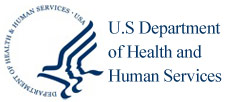- Weathering the Storm Together: Community Resiliency Hubs Hold the Promise of Local Self-Sufficiency and Supportive Mutual Aid
- Virginia Tech Researchers Bring Rural Families into the Nation's Largest Study of Early Brain and Child Development
- Expanding Access to Cancer Care for Rural Veterans
- VA: Veterans Rural Health Advisory Committee, Notice of Meeting
- Scaling Rural Wellness with Clever Collaboration
- Stroudwater Associates Enhances Rural Healthcare Dashboard with New Data to Support State Rural Transformation Grant Applications
- Harvest Season Is Here: Busy Times Call for Increased Focus on Safety and Health
- HHS Dispatches More Than 70 Public Health Service Officers to Strengthen Care in Tribal Communities
- Wisconsin Rural Hospitals Team up to Form Network
- CMS Launches Landmark $50 Billion Rural Health Transformation Program
- American Heart Association Provides Blood Pressure Kits at Southeast Arkansas Regional Libraries to Support Rural Health
- Broadening Access to Minimally Invasive Surgery Could Narrow Rural-Urban Health Gaps
- Instead of Selling, Some Rural Hospitals Band Together To Survive
- Help Line Gives Pediatricians Crucial Mental Health Information to Help Kids, Families
- Rural Health: A Strategic Opportunity for Governors
How A Fire Department Funding Model Could Preserve Rural Emergency Departments And Quality Emergency Care
Health Affairs, Commentary, June 14, 2021
Nearly 60 million rural Americans depend on local hospitals and their emergency departments (EDs) when serious (for example, trauma, stroke, heart attack) and potential (for example, chest or abdominal pain) emergencies occur. Yet, since 2010, 136 small and rural hospitals have closed. The COVID-19 pandemic accelerated this trend, with a record 20 new hospital closures in 2020 and many more at risk. Mortality worsens when hospitals close because of reduced access to the life-saving skills of emergency physicians and the hospitals where they work.
Recent policy initiatives have attempted to address rural hospital closures. Some Pennsylvania rural hospitals and all Maryland hospitals are funded through global budgets. Starting in January 2023, a new rural emergency hospital (REH) designation will allow rural critical access hospitals to convert to an REH and receive fixed payments to support infrastructure and a 5 percent increase in fee-for-service payments in return for maintaining an ED and specified outpatient services. A weakness of these models is that they focus on supporting the hospital facility alone. None ensure sufficient resources to pay for the 24/7/365 on-site emergency physician, plus some level of surge capacity, needed to provide ED patient care.
To understand why rural and small hospitals struggle to maintain high-quality emergency physicians in their EDs, it is important to describe the economics of ED staffing and how the COVID-19 pandemic changed those economics for the worse. Pre-pandemic, a delicate balance of volume, complexity, and payer-mix supported ED staffing with fee-for-service payments. Some visits reimbursed well and required few resources (for example, privately insured, low acuity). For other visits (for example, Medicare, Medicaid, high acuity, and uninsured), reimbursement did not cover costs. Medicaid expansion under the Affordable Care Act reduced uninsured visits but has been no panacea. Medicaid expansion replaces unreimbursed visits by uninsured patients but only with well-below-cost Medicaid rates. Expansion also generates payer crowd-out: Some visits, previously well-reimbursed by commercial insurance, become low-paying Medicaid visits.
No Surprises – Protecting Patients from Surprise Medical Bills

The Biden-Harris Administration, through the U.S. Departments of Health and Human Services (HHS), Labor, and Treasury, and the Office of Personnel Management, issued “Requirements Related to Surprise Billing; Part I,” an interim final rule that will restrict excessive out of pocket costs to consumers from surprise billing and balance billing. Surprise billing happens when people unknowingly get care from providers that are outside of their health plan’s network and can happen for both emergency and non-emergency care. Balance billing, when a provider charges a patient the remainder of what their insurance does not pay, is currently prohibited in both Medicare and Medicaid. This rule will extend similar protections to Americans insured through employer-sponsored and commercial health plans.
“No patient should forgo care for fear of surprise billing,” said HHS Secretary Becerra. “Health insurance should offer patients peace of mind that they won’t be saddled with unexpected costs. The Biden-Harris Administration remains committed to ensuring transparency and affordable care, and with this rule, Americans will get the assurance of no surprises.”
The full press release with embedded links to fact sheets and the interim rule can be accessed here.
Research: Rural Pennsylvania Suicide Rates Are Rising

According to a study funded by the Center for Rural Pennsylvania, between 1999 and 2018, suicide rates across the state significantly increased. In 2018, the researchers said, the suicide rate in rural areas of the state was 25% higher than in urban areas.
While the study of suicides showed that the rate is higher in rural areas, those numbers may be even higher still, researchers said.
While the study didn’t specifically address the causes of the discrepancy in suicide rates in urban and rural areas, it did look at some of the indicators of higher suicide rates.
Higher numbers of handgun sales per 1,000 residents, lower levels of education, lower incomes, larger populations over age 65, and higher levels of unemployment all correlate with higher county suicide rates, the study found.
“In terms of our particular report, we are not able to deduce exactly why those rates have been increasing,” said Dr. Daniel Mallinson, one of the study’s authors. “But others whose work has looked at that…they’ve been able to gather some quantitative evidence on that. For instance, there’s been a rise of deaths of despair, particularly in rural areas in the US, and not just in suicides but also in overdoses and alcohol-related deaths.”
The researchers connected these deaths of despair to the loss of quality of life and less economic opportunities, which have had “substantial impacts on people’s lives directly and on people’s resources but it also has damaged or undermined communities and families.”
Beyond the quality of life issues, according to the National Advisory Committee on Rural Health and Human Services, rural areas also tend to be at higher risk due to limits in the “accessibility, availability, and acceptability of mental health care services.”
Rural counties tend to have smaller ratios of mental health providers per capita. For instance, in Sullivan County, Pennsylvania, there are only 16 mental health providers per every 100,000 people, according to the Pennsylvania Department of Health. Compare that to Montgomery County, Pennsylvania, with 333 mental health providers per 100,000. And 23 of the 24 Health Professional Shortage Areas in Pennsylvania, identified by the U.S. Health Resources and Services Administration as areas that have a shortage of healthcare professionals, are rural areas of the state.
NIOSH COVID-19 Update

As part of NIOSH’s efforts to keep our stakeholders up to date on the CDC and NIOSH COVID-19 response, here is a summary of new information available
- Making Masks for the Workplace
New information from NIOSH is available for manufacturers to produce Workplace Performance and Workplace Performance Plus masks. This new NIOSH criteria for workplace masks also meets the standard in the ASTM International Specification for Barrier Face Coverings, F3502-21. - Types of Masks
CDC recently updated its Types of Masks webpage to include information that identifies masks that meet a standard, including the ASTM Standard. - Vaccinating Migrant/Migratory and Seasonal Food and Agriculture Workers
CDC published a new webpage to help jurisdictions ensure that migrant and migratory seasonal food and agricultural workers are vaccinated. The webpage addresses the unique challenges and best practices for providing vaccines to these workers.
FCC Seeks Membership on Connectivity Task Force
The Federal Communications Commission (FCC) announces the intent to re-charter the Task Force for Reviewing Connectivity and Technology Needs of Precision Agriculture in the United States, a federal advisory committee, aimed at delivering connectivity on unserved agriculture land.
The Task Force for Reviewing the Connectivity and Technology Needs of Precision Agriculture in the United States (Precision Ag Connectivity Task Force or Task Force) will provide advice and recommendations for the FCC on how to assess and advance deployment of broadband Internet access service on unserved agriculture land to promote precision agriculture. Congress directed the FCC, in consultation with the Secretary of the Department of Agriculture, to establish the Precision Ag Connectivity Task Force in the Agricultural Improvement Act of 2018 (2018 Farm Bill).
Center for Rural Pennsylvania Launches 2021 Rural Policy Summit Series on July 22

“The plan for the Rural Policy Summit is to bring together a wide range of stakeholders, including policymakers, nonprofit leaders, academic researchers, industry professionals, and others interested in rural, to learn about and discuss major policy issues that will affect rural Pennsylvania over the next 5 to 10 years,” Center Director Dr. Kyle C. Kopko said. “As we all know, there are many challenges and opportunities facing rural Pennsylvania. This summit will explore policy issues in an interdisciplinary way so that community leaders are better equipped to meet the needs of Pennsylvania’s nearly 3.4 million rural residents.”
The five topic areas for the summit are education, health care, local services, economic development, and agriculture.
The July 22 session will begin at 9 a.m. and will provide a broad demographic overview of rural Pennsylvania, which will help set the stage for each monthly session that will begin in September and wrap up in January 2022.
The series is being co-hosted by the Pennsylvania Office of Rural Health, the Pennsylvania Rural Development Council, the Pennsylvania Department of Community and Economic Development, the Pennsylvania Downtown Center, and the Philadelphia Federal Reserve Bank’s Community Development and Regional Outreach Department.
The Rural Policy Summit will be held via Zoom webinar. Please register in advance at https://zoom.us/webinar/register/WN_uIKYtfwURuyDYIKjLT45pA.
